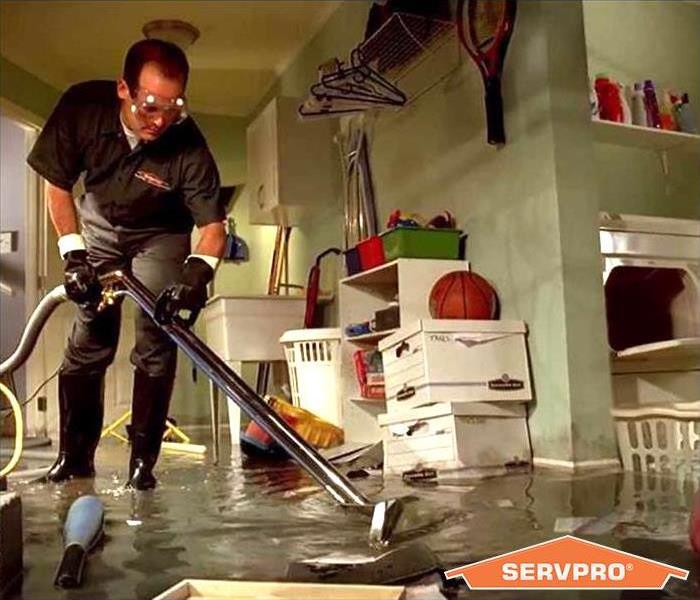Flood Damage vs Other Water Damage
7/27/2022 (Permalink)
Water damage in your home is unfortunately not an uncommon problem for homeowners to face. From leaky toilets, busted pipes, or heavy rainstorms, there are a multitude of different ways water can damage your home. With all of these different avenues for water to get into your home, it’s important to note that not all water damage is treated equally. The damage caused and the means to clean it up will be different depending on the source. One of the biggest differences is between something like a busted or leaky pipe, and flood waters from a storm.
To better understand the difference between these events, you should know the difference between the three categories of water damage. Category one is considered clean water. This water does not pose a health threat actively and is typically caused by things like broken water lines or sink overflows. Category two is gray water. Gray water is water that may be contaminated and could potentially pose a health risk if ingested. Things like broken toilets (with no sewage) and broken sump pumps usually fall into this category. Category three is black water. This is water that is completely unsanitary and contains bacteria or other organisms that can make you sick. Water damage that falls into category three is usually caused by sewage, other water damage that has been sitting for multiple days, or flood waters.
Because flood water damage is caused by water entering the home from the outside, it likely contains bacteria or other organisms, as opposed to something like an ice maker line breaking and getting clean water all over your kitchen. Since this storm water poses a health risk it needs to be treated differently. PPE must be worn, and any surfaces that may have come in contact with the water should be properly sanitized or even removed depending on the extent of the damage. Since things like drywall, insulation, and fabrics are especially porous it can be difficult to make sure that they are cleaned well enough to not be a continued health risk after the water is cleaned up. Another factor is because the water is already contaminated with bacteria and microorganisms, the likelihood of mold growth and secondary damage is much higher than with something like a pipe bursting.
If your home suffers from a flood, you should not try and clean up the water yourself. Without the proper knowledge and safety equipment you’re putting yourself at risk as well as putting your home at risk if you are unable to properly find and dry out all of the hidden pockets of moisture. Our team at SERVPRO of Richmond and SERVPRO of Henrico is expertly trained in dealing with these scenarios and can help ensure that your home is dried out and cleaned up in the most efficient and effective way. We’re available 24/7, 365 days a year for emergency services. Please give us a call or fill out a form online and let us know how we can help!






 24/7 Emergency Service
24/7 Emergency Service
